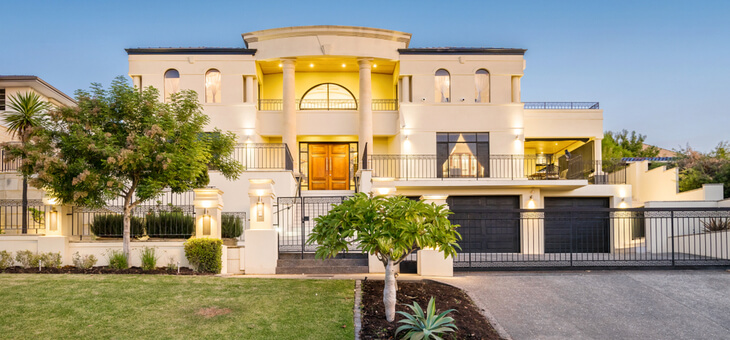When is big too big? When you are an Australian home, apparently.
Research by the Australian Bureau of Statistics (ABS), commissioned by CommSec, has found that new Australian houses are now an average 229.3 square metres, a figure only matched globally by the US.
“That’s a crazy amount of floor area,” incoming president of the Australian Institute of Architects Shannon Battisson told The Age.
“Even with the most efficient house, the bigger it is, the more energy it uses.
“There is really something to be said for designing only the amount of house you need. And that’s something Australians are not good at doing,” she said.
“Even an eight-star house that’s 300 to 400 square metres is going to be using a large-house size worth of energy.”
Read: Why older Australians struggle with sustainability
The average Australian free-standing house is 24 per cent bigger than houses built 30 years ago, with new homes (including apartments) 14 per cent bigger.
Many new homes were also built fence to fence, or are too big for the blocks, creating heat islands, hard surfaces and little room for rainfall run-off. The NSW government is planning to ban dark roofs, a move expected to decrease indoor temperatures by 2.4°C.
The research found houses sizes had fallen in the 2020–21 reporting period, if only by 2.9 per cent from a steady seven-year increase.
Read: Ageing homes responsible for a fifth of Australia’s emissions
The report attributed the fall to an increased focus on sustainability, a desire for low-maintenance homes, smaller lot sizes, fewer people per home, affordability, a desire for proximity to inner cities and energy costs.
The average new apartment completed in 2020–21 was at an 11-year high of 138.3 square metres, up 0.4 per cent over the year.
The biggest new houses in Australia are in the ACT (259.3 square metres) and Victoria has the biggest apartments (156.8 square metres) and the biggest overall size – houses and apartments – was Western Australia at 214.8 square metres.
It appears Australian new homeowners are demanding luxuries as basics, with mudrooms, home theatres, a butler’s pantry, four bedrooms with at least one ensuite, al fresco dining and walk-in robes all considered ‘standard’ despite the average household containing 2.5 people.
Summing up the report, CommSec’s chief economist Craig James said the trend to larger homes and apartments was a response to COVID to accommodate people wanting space to work at home.
Read: Suburbs making us physically and mentally ill
“More people are working from home, in addition to the normal activities of eating, sleeping and entertaining. For some families this has meant bigger homes were required. In other cases, it has prompted a recalibration of space in the home,” Mr James said.
“It’s not just COVID, but also environmental considerations as well as power needs, that have implications for home builders, trades, building materials, homeware stores, electrical stores and housing fit-out businesses.
“It seems likely that more of us will be working from home, at least part of the time, with implications for central business districts (CBDs) of capital cities including office and retail space usage, cafes and restaurants, services such as hairdressers and public transport services.”
The report also revealed that while architects and builders were quick to recalibrate in response to COVID requirements for at-home living, it was too early to tell in the reporting cycle if the trend would continue.
Do you think modern homes are too big? Why not share your thoughts in the comments section below?
If you enjoy our content, don’t keep it to yourself. Share our free eNews with your friends and encourage them to sign up.

